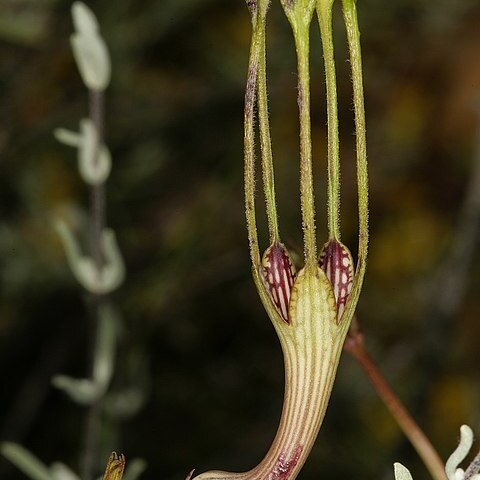Climbing (sometimes weakly so) succulent. Stems branching, 0.3-1.0 m long; produced from fleshy cluster of fascicled, cylindrical roots. Leaves reduced to small ovate scales barely reaching 10 mm. Flowers usually solitary, produced at nodes; peduncles up to 10 mm long; pedicels 0-7 mm long. Corolla erect, cylindrical, 30-58 mm long; tube ± as long as lobes, with dark longitudinal stripes (Bruyns 1985) or verrucose-spotted (Dyer 1980), glabrous within, basal inflation subglobose 5-8 mm in diam., expanding towards mouth; lobes deltoid at base, soon becoming linear, margins infolded, 12-50 mm long, connate at apex (often inflated) forming a loose cage above mouth. Corona: interstaminal corona lobes fused basally but with upper margins produced into erect, lobular appendages ± 2 mm long, these forming 2 adjacent lobes appearing bifid; staminal corona lobes fused to interstaminal corona, free above into narrow ligulate or slightly spathulate appendages ± 2 mm long, producing a swollen nodule ± 1/3 of the way up, then connivent above this.
Like C. fimbriata but petals fused towards tips into slender cage, with small cilia along margins.

